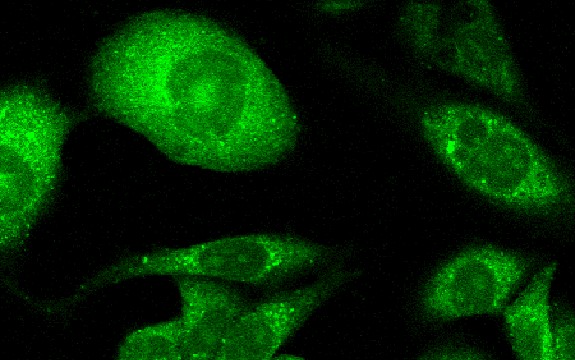Cancer cell structure decoded

In Summary
- Swinburne researchers are part of a team that has solved the structure of a molecule linked to the growth of cancer
For the very first time, we have a glimpse of how the molecule looks on the cell surface and how it works.
Swinburne researchers are part of an international team that has won a 30-year race to solve the structure of an important cancer-related molecule.
The molecule, called the epidermal growth factor receptor (EGFR), plays a fundamental role in regulating the chemical reactions that occur in living organisms in order to maintain life – or cellular metabolism.
It is linked to the growth of almost one third of cancers including lung, breast and brain cancer.
By combining a powerful microscopy technique with computer simulations of the structure the researchers developed a model of how the EGFR appears on the cell surface and how it functions.
The discovery was made by investigators from the UK, USA and Australia, including members of Swinburne’s Centre for Micro-Photonics, Associate Professor Andrew Clayton and Dr Alireza Lajevardipour.
"During this project we developed a novel microscopy technique to decipher the complex aggregation of protein molecules on a cell surface. This technique can be used for future cell studies," Dr Lajevardipour says.
“For the very first time, we have a glimpse of how the molecule looks on the cell surface and how it works,” Associate Professor Clayton says.
“By knowing how it works in greater detail we can design improved drugs.”
The study is published in Nature Communications.
Participating institutions:
- Central Laser Facility, Research Complex at Harwell, STFC Rutherford Appleton Laboratory, Harwell Oxford
- D E Shaw Research, New York, NY USA
- Computational Science and Engineering Department, Science and Technology Facilities Council, Daresbury Laboratory, Warrington UK
- Centre for Micro-Photonics, Swinburne University of Technology
- Department of Biochemistry and Molecular Biophysics, Washington University School of Medicine, St. Louis, Missouri, USA
- Division of Cancer Studies, King’s College London, UK
- Francis Crick Institute, Protein Phosphorylation Laboratory, London, UK
- Department of Biochemistry and Molecular Biophysics, Columbia University, NY, USA

